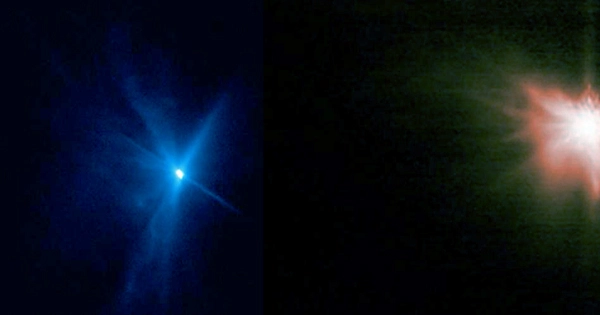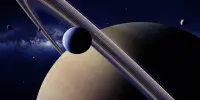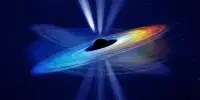The first actual test of humankind’s planetary protection was carried out last September. And because they say that the best defense is a strong offense, we “took the fight” to the asteroids. The orbit of Didymos’ smaller companion, Dimorphos, was altered by an impact from NASA’s DART probe. It was successful based on immediate analysis, and today’s follow-up studies have confirmed that it exceeded our predictions.
Double Asteroid Redirection Test, or DART for short, is a kinetic impactor. In this method of planetary protection, the “dangerous” object is slammed into by a small, swift spacecraft. The celestial body gains momentum from the collision, which also causes an orbital change. Despite the fact that Dimorphos orbited Didymos, it was a perfect place to evaluate how much its orbit could be brought in by slowing it down. It was anticipated that the collision would alone cut the duration of the event by seven minutes. Due to the debris cloud that was discharged, the total duration was approximately 33 minutes.
People may perceive the DART mission as a simple exercise in which one solid spacecraft collides with one solid asteroid, akin to a game of space pool. But asteroids are much more complicated than just a simple boulder; in fact, the majority of asteroids are what we typically think of as debris fields.
Thomas is one of the five papers about the DART mission’s impact (both literally and figuratively) that were released today. Her essay was primarily concerned with how the Dimorphos era changed. Together, these studies give us the most comprehensive knowledge of the test we currently have and shed light on other bodies and planetary defense. A separate paper’s estimation of the momentum delivered led to the conclusion that the ejected material contributed more momentum than the impact alone.
“A lot of debris will be released and fly away from an object if a spacecraft impacts a pile of rubble. This is evident in our initial post-impact photos. That substance being expelled has momentum. The period shift that we see is due to both the momentum increase from the motion of the ejected material and the momentum transfer from the impacting spacecraft, Thomas told.
“The orbital period change was calculated to be seven minutes for a perfectly inelastic collision—one solid spacecraft directly impacting the asteroid with no material ejected. We had a broad range of period change estimates up to slightly more than 40 minutes when we included the ejected material in the pre-impact analysis.
According to estimates, the DART collision occurred between two boulders, one of which the spacecraft grazed as it slammed into the asteroid. Numerous telescopes on Earth and in space, including LICIACube, a small spacecraft, monitored the occurrence.
They included amateur scientists who were able to observe the formation and development of the debris cloud using Unistellar telescopes. One observer in Kenya and two on Réunion Island witnessed the impact firsthand, and people from all over the globe then made observations to identify the characteristics of the plume.
“We weren’t anticipating to see it so plainly. The asteroid brightens up, and then a dispersed plume appears around it, says Laurent Marfisi, founder and CEO of Unistellar. We were able to track the effects of this for a month to see how the plume changed thanks to the power of our user network.
“We weren’t anticipating to see it so plainly. The asteroid brightens up, and then a dispersed plume appears around it, says Laurent Marfisi, founder and CEO of Unistellar. We were able to track the effects of this for a month to see how the plume changed thanks to the power of our user network.
“We deduced the mass loss in the impact from the magnitude and made estimates about the size of the grains from active main-belt comet observations. This is crucial because it allows us to derive meaningful data from our work that ultimately agrees with that obtained from other techniques, such as the change in the period of Dimorphos, according to Dr. Franck Marchis, co-founder and Scientific Director of Unistellar.
Marfisi also emphasizes the Unistellar cameras’ capacity for color vision. They noticed that the eject was clearly crimson in color. Whether it was a true color or a result of light passing through the dust is presently unknown. More details will be revealed by the upcoming Hera expedition of the European Space Agency, which will arrive at asteroids in late 2026.
For the next 100 years, there is no confirmed asteroid that could threaten Earth. However, our inventory of the smaller objects that might cause regional calamity is still far from comprehensive. Planetary defense techniques are crucial, even if they are developed with the goal of never needing to be used. Additionally, DART proves that kinetic impactors are effective, as stated in a different article in this release.
“If a kinetic impactor were required, we could anticipate greater deflection from the impactor than in a straightforward crash. This implies that we could alter an asteroid’s trajectory with shorter notice. If we had to deflect a real target, this truth would be absolutely crucial, said Thomas.
















